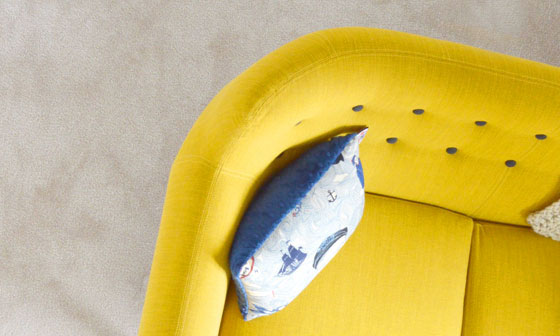A multi-billion-dollar small business boost, a crackdown on welfare, a tax system focused on “fairness” and mounting deficits have been laid out in the Abbott Government’s second federal budget.
It has been described by Treasurer Joe Hockey as the budget to encourage Australians to “get out there and have a go”.
A $5.5 billion package to help more than 2 million small businesses will share the spending limelight with the $3.5 billion childcare changes, which were announced on the weekend.
Small businesses will be able to immediately deduct any asset costing less than $20,000 — a massive increase from the current $1,000 value threshold.
The instant asset write-off will be available until June 30, 2017 and is slated to cost the budget $1.8 billion.
“Cars and vans, kitchens and machinery — anything under $20,000 is immediately 100 per cent tax deductible from tonight,” Mr. Hockey declared in his budget night speech.
The stimulus measure is not capped, but the Treasurer is unperturbed about the risk of a budget blowout.
“If there is an exceptional response, I say ‘fantastic’,” he said in a press conference in the budget lock-up.
“It means the economy is growing even faster than we might have forecast.”
The Opposition has indicated it will support the measure in Parliament but Shadow Treasurer Chris Bowen also noted the Government axed a similar initiative introduced by Labor.
“He was standing at the dispatch box today lauding an instant asset write-off he reversed,” Mr. Bowen told the ABC.
Barrie Cassidy’s budget analysis
We have known for months now that this was going to be a retreat from a full on assault on the debt and deficit “crisis”; that major structural reform was on the back burner.
But still, boldness to boredom in a single year was a bit of a stretch.
The document was so different to last year that journalists in the lockup were asking each other what Joe Hockey would have said had this been introduced by Wayne Swan.
Presumably another socialist document that ignored reality.
The imperative now though for the Government – after a miserable 12 months – is to get back in the political game, and as a political document, this budget just might work.
And from July 1, all small businesses — whether incorporated or not — will receive the promised company tax cut of 1.5 per cent, costing the budget $3.3 billion.
“This is where the jobs of the next decade will be,” Mr. Hockey said.
Small business groups say their members will heed the Treasurer’s call to go out and buy.
“They’re giving them something that will really motivate them to go and spend and buy things and grow their business and save their business and employ people and get cash flowing through the economy,” Peter Strong from the Council of Small Business said.
But the Council of Trade Unions doubts whether it will create new jobs, echoing the budget projections showing unemployment hovering around 6 per cent for at least the next four years and employment growth climbing just slightly from 1.5 to 2 per cent.
Deficit forecast
Unemployed people have won a reprieve from the Government, with a backdown on one of the most contentious measures from last year’s budget — the six-month wait for people under 30 to access benefits.
It was to have saved the budget $1.2 billion but has been booked instead as a $1.8 billion cost, alongside a milder measure to force people under 25 to wait for four weeks and actively seek work before receiving Newstart.
The Government has also been forced to delay its move to increase the eligibility age for Newstart from 22 to 25 until July next year, at a cost of $171 million.
For people in a job, wages will continue to grow slowly, increasing between 2 and 3 per cent until 2018-19, when they may break through to 3.25 per cent.
And the prospect of any income tax cuts are likely to move further into the never-never as the budget continues to be swamped in red.
The deficit for 2015-16 will hit $35 billion — more than double what was forecast last year, though less than what some observers had predicted. The Government is still predicting the budget will creep above the line into surplus in 2019-20, but most economists have described that kindly as “optimistic”.
Underpinning the deficit figure is a revenue write-down of $52 billion over the next four years, driven by plunging iron ore prices and lower income tax receipts.
Budget 2015 analysis:
Forecasts in this budget for revenue have been based on an iron ore price of $US48 per tonne, an assumption that Treasury has acknowledged is at “considerable risk” of change.
As it faces a revenue black hole, the Government has sought savings from measures to promote “fairness in tax and benefits“, banking $1.7 billion in savings on welfare “integrity” measures.
Ramping up investigations into welfare fraud and non-compliance, looking into an extra 200 cases a year, and recovering historical debt from 2010 to 2013 will return $1.5 billion to the budget over four years.
Preventing new parents accessing both employer and taxpayer-funded paid parental leave schemes will save the budget $968 million. The Government is also expecting the pro-vaccination policy of “no jab, no pay” to save the budget $500 million over five years, implying many people are expected to continue to be conscientious objectors and not have their child immunised.
Foreigners on working holidays in Australia will not be eligible for the $18,200 tax-free threshold and will begin paying tax from the first dollar they earn, adding $540 million to the budget. And Australians living overseas will also have to pay back their student loans from next January for both new and existing debts, putting $26 million into federal coffers.
Axing a tax offset for fly-in fly-out workers if they do not live in a remote area will save $325 million.
Closing immigration detention facilities on Christmas Island and in Darwin will save the budget $554 million over five years, through reduced charter flights and giving work rights to some asylum seekers on bridging visas.
The Government also wants to build better infrastructure throughout northern Australia through a concessional loan facility that will initially cost $138 million but may build to $5 billion. It will provide cheaper loans to companies and state governments to build ports, rail and power lines throughout Northern Australia in a policy Mr. Hockey said “unleashes the nation’s potential”.
The Government will also spend $254 million on what it has called a “digital transformation agenda” to improve its online service delivery.


Subscribe to updates
Get the latest news and payment insights from Eway hot off the press.



